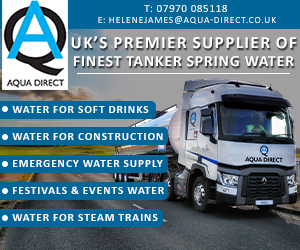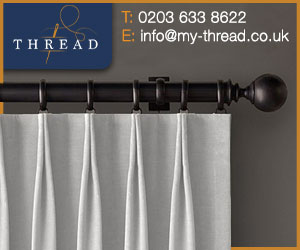Construction News
26/03/2024
Marine Plywood: A Comprehensive Guide From DIY Building Supplies
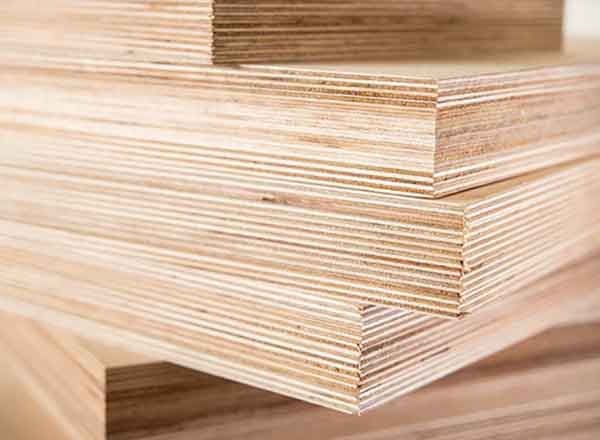
There's more than one type of plywood.
While all types can be useful, there are some that can be considered “better” for certain types of projects. Take marine plywood, for instance. This is known for being one of the sturdiest on the market, and has become the go-to option for homeowners and construction specialists in need of the finest materials, especially if the risk of moisture damage means it’s not possible to safely use other types of plywood.
It's a quality solution for many interior and exterior home DIY projects, and while it’s more expensive than other types of plywood, it’s cheaper than timber. Plus, it has a long list of advantages, most notably durability and versatility, that often make the additional expenses worthwhile.
In this post, we're going to run through everything you need to know about marine plywood, including what it is, how it’s made, its applications, the advantages it offers over wood types, and how you can install it. And remember — if you’re looking for quality marine plywood, then be sure to check out our collection here at DIY Building Supplies.
What is Marine Plywood?
Marine plywood is one of the best plywoods on the market. Used extensively in home projects and across many different industries, it’s known for being tough and resistant to damage, most notably water damage. Homeowners often use marine plywood in areas where there’s a risk of moisture, including outdoors, in bathrooms, and in kitchens.
Marine plywood is designed in a way that gives it exceptional structural strength, typically much stronger than other plywood types. There's a higher cost attached to marine plywood, but you get what you pay for: marine plywood is simply better equipped to handle some environments in a way that other plywood types can not. With that being said, in some cases, it's not necessary to invest in marine plywood — if there’s no (or minimal) risk of moisture and the strength of the product isn’t essential, then regular plywood will make more sense.
How Marine Plywood Is Made
Marine plywood is made in much the same vein as regular plywood, just with a few differences. For starters, a different type of wood is typically used. Producers tend to use high-quality, strong wood that stands up well against moisture and decay. That wood is then sliced into thin boards in a similar way to traditional plywood, and depending on the manufacturer, may be treated with protective chemicals to further protect against deterioration. Marine plywood is made with more veneers than regular plywoods, which tend to use fewer, thicker veneers made of wood of a lower quality.
From there, the sliced pieces of wood, known as veneers, are placed on top of one another with alternating grains, which helps to strengthen the plywood. From there, it's bonded with a specially formulated adhesive. It’s a heat-based adhesive pressing that ensures the veneers are firmly in place.
From there, the job is basically done beyond perhaps some additional treatments. The marine plywood boards are then cut down to their desired size.
Marine Plywood Applications
As we mentioned above, it doesn’t make sense to use marine plywood for all projects. While it's stronger and more durable than traditional plywood types, it doesn't automatically make it 'better'; it's just higher quality. If your project doesn’t require the best of the best, then regular plywood will likely suffice.
You'll typically find marine plywood used in projects where there's a need for water resistance and additional strength. Before deciding to buy marine plywood, it’s recommended to check that it’s necessary. There's an additional cost of marine plywood compared with other plywood, so doing so can help save you money if you decide it’s not required for the project.
Let's take a look at some of the main marine plywood applications.
1. Boats
We've already said that marine plywood is great for environments where a lot of water is found, and there's nothing that spends more time in water than a boat! Marine plywood has historically been used in the manufacture of boats, as well as in the various components of the boat. You probably wouldn’t use marine plywood in your home’s living room, but you would in your boat’s living room.
Note that not all marine plywood is suitable for boat building. It has to undergo special treatment before it’s fully waterproof (otherwise, it’s just water-resistant). It’s also a pliable material, making it the ideal choice for the curved areas you’ll typically find on a boat.
2. Docks
It's not just on boats that you’ll find marine plywood. It's also commonly used to make boat docks, too. Again, depending on the style of the dock, the marine plywood may have to be treated with additional products to ensure it's completely waterproof. Marine plywood is a favoured option for home dock builders because it is comparatively low maintenance. Unlike other wood types, you won’t need to continually treat a marine plywood dock — it offers peace of mind that the dock will be warp- and rot-free for many years, with only minimal maintenance. It's also resistant to any knocks and bumps that may occur during the docking process.
3. Kitchens
Regular plywood can look good in a kitchen, but over time, it'll begin to show wear and tear. Kitchens often attract large volumes of moisture, both in the shape of spillages and from steam during cooking, and that causes warping and other damage to low-quality plywood. Marine plywood, on the other hand, has been designed to withstand the effects of moisture, ensuring that the kitchen looks as good as new even many years down the line. You'll often find marine plywood used for a kitchen’s floor and cabinets. Plus, it looks great, offering a perfect balance between functionality and style.
kitchen-cabinets-made-from-plywood
4. Bathrooms
Marine plywood excels anywhere where there's a lot of moisture, and there’s no room in the house that has more moisture than the bathroom. From stepping out of the shower, leaks, and steam from hot water, it’s a space where moisture levels can be high. Choosing the wrong wood can cause a host of problems, such as wrapping and rot, that can be expensive — and frustrating — to remedy later down the line. You can use marine plywood in multiple areas of the bathroom, including in cabinets, subflooring, and walls. It also works as an aesthetically pleasing option for the area behind the sink.
5. Garden Furniture
Looking for garden furniture that you won't have to replace within a year? Then marine plywood might be just what you’re searching for. As we all know, here in the UK we receive more than our fair share of rain. Even when it’s not raining, the moisture in the air and on the ground can cause damage to furniture made of lower-quality wood. While you’ll want to keep any garden furniture protected from the rain, if you’ve chosen marine plywood then you can be confident that it will be able to withstand exposure to water and moisture better than other materials. It’s often used to make outdoor tables, benches, and chairs, offering a stylish appearance while retaining plenty of durability.
6. DIY Projects
Marine plywood is often used by home DIY enthusiasts for their projects. Its strength and pliable nature mean that it can be used for many home woodworking projects, but its moisture resistance makes it especially suitable for garden DIY projects. If you're looking to make a bird box, outdoor storage box, or plant tray, then marine plywood is the way to go. Not only will it put up a good fight against the rain, but it’s also strong enough to withstand the general bumps and wear and tear that garden items are typically subjected to.
7. Exterior Trims
Marine plywood can also be used for a home's exterior trims and sidings. For example, the material may be used for decorative or functional items placed on the outside of the home, for instance around the door entryway. In homes close to the water, marine plywood is often used to add another level of protection against the elements, though in some cases it may be better to use vinyl or metal — it’s best to consult with an expert before making your decision. If marine plywood is suitable for exterior trim and siding, you'll benefit from longevity and aesthetic appeal, especially as it can be painted to match your existing decor.
Advantages of Marine Plywood
As you'll be aware, you'll have plenty of options when it comes to choosing a wood type for your home or construction project. In a sea of competition, marine plywood manages to stand out from the crowd, and that’s no accident. This special type of plywood has been specifically designed with advanced features that make it the preferred plywood of choice, especially for projects that have to factor in potential water damage. Even for projects where that’s not a consideration, marine plywood can still be the standout option, and that’s due to the many advantages that it offers. Let’s take a look at just some of the many benefits of this type of plywood.
1. It's Durable
If you're going to spend time, energy, and money on a project, then you'll hope that it lasts for a long time. Nobody wants to have to redo a project earlier than expected because they used the wrong material. Marine plywood is known for being among the hardest plywood on the market and is significantly stronger than traditional plywood. That helps to make it highly durable, ensuring a high degree of longevity. Unlike traditional plywood, which is made using fewer, thicker veneers, marine plywood is made using many thinner veneers, which are positioned at alternating angles for unbeatable strength.
2. It's Resistant
You'll often hear that marine plywood is resistant to water damage, and yet, while that’s true, it’s not the number one reason why it's selected over other plywood types. The reason it’s so widely used is because it is resistant to impact damage. Because the veneers used in marine plywood are strong and tightly packed, the plywood is able to withstand a lot of knocks and bumps that would likely cause damage to lower-quality plywood. Homeowners and businesses that use marine plywood for their projects can have peace of mind that the plywood will be able to withstand whatever comes its way, for many years to come.
3. It's Waterproof
It's not strictly true that marine plywood is waterproof, at least not in its original form. To obtain that quality, the marine plywood must be specially treated with a waterproofing material. Still, even with that treatment, the plywood will be water-resistant. While it won’t withstand excessive water damage, it won’t be prone to warping or rotting in the same way that traditional plywood will. If yo'’re looking for a material that you can use outside or in areas that contain a lot of water — such as bathrooms or kitchens — then marine plywood is the way to go.
4. It's Versatile
Marine plywood is highly pliable, making it suitable for a wide range of applications and uses. It may be strong, but it can also be used in a wide variety of ways. That's part of the reason why it’s so commonly used in boat building; it’s just exceptional when it comes to making curved pieces. Furthermore, though it’s highly versatile and can be manipulated into any number of shapes and sizes, it manages to retain its original strength. It's a great option if you’re looking for a particular shape or bend while still retaining all the known benefits of marine plywood.
5. It Looks Great
So far, we've mostly talked about the functional advantages that marine plywood offers. But there’s also plenty to admire about the overall aesthetic of marine plywood, too. This type of plywood looks significantly better than traditional plywood, due to both the quality of the wood used and the manufacturing process. The end result is a fine finish, especially if the marine plywood is of a higher grade. While it’s unlikely to be the standout decorative feature in a room, its clean and sleek finish means that it can more than hold on its own, and can help elevate the overall look of the space.
6. It's Good for the Environment — And Your Wallet
Many homeowners and businesses have a growing eye on the environmental impact of their buying decisions. Marine plywood is typically manufactured using sustainable practices. Throw in a long lifespan, and you have a material that’s as good for the environment as can be.
Furthermore, though marine plywood typically has a higher upfront cost than other plywood and materials, that it lasts so long means it can be thought of as an investment. It might have a higher initial price tag, but it’ll last a long time — so much so that. Once it’s installed, you won’t have to think about replacing it for many years, provided you keep up to date with its maintenance.
Installing Marine Plywood
Marine plywood may be more advanced than other types of plywood, but the installation process is broadly the same. However, it will differ depending on the intended use. While it’ll differ from job to job, you can expect the installation procedure to loosely follow the steps outlined below.
1. Preparation
If you've bought from a quality marine plywood supplier, then your plywood should be ready for use as soon as it arrives. However, it’s important to check that everything is in order before you begin installing. The plywood pieces should be dry, clean, and free of any imperfections. The surface on which it will be installed should be, too. Note that if you're using your marine plywood for water purposes, you will likely need to treat the product with a waterproofing agent first.
2. Cutting Down to Size
Marine plywood comes in specific sizes. That's all good and well if your project requires the existing size of the plywood, but if it doesn’t, then you'll need to cut the plywood into the correct size. A circular or table saw will do the trick, just be sure to have a clear idea of what size you need before you begin cutting. As always, remember to take preventative measures to prevent injury, such as safety glasses and work gloves.
3. Laying Down
It's best to do a dry run before you fasten the plywood into place. Place the marine plywood in its intended spot to check that everything’s in order. If it fits perfectly, then you'll be fine to proceed to the next stage. If there are any big gaps or the piece is too large, then return to the sizing stage. It’s best to leave a small gap between plywood boards to allow for expansion, especially if the marine plywood will be subjected to a lot of moisture.
4. Securing and Fastening
You can usually use screws to secure the marine plywood boards to the material below. It's best to secure the boards every 7 inches or so on the edges, and every 12 inches across. You can then fasten the marine plywood pieces, though it’s best not to fasten each board. By fastening alternating boards, you'll help to prevent common issues such as warping. You can further the stability of the marine plywood by applying adhesive between the board and substrate.
5. Finishing
You can add a finish to your marine plywood, though this won't always be necessary. It's only required if you're installing the boards in an area prone to moisture — there are sealants and waterproof paints that will keep the marine plywood boards safe. You may also consider adding a protective coating that’ll help to prolong the life of the marine plywood.
Once that's done, the marine plywood will have been successfully installed and you can begin to enjoy all the benefits.
How to Care for Marine Plywood
If you've bought from a quality supplier, then your marine plywood should last a long time. After all, it's highly strong and durable and is adequate at resisting everyday wear and tear. With that being said, all products need a little bit of TLC from time to time. You can ensure that your marine plywood stays in tip-top condition by, wherever possible, preventing it from extended exposure to sunlight and water. If it’s used in a water-heavy environment, such as in your garden, then regularly treating the plywood with waterproof protection will help. In doing so, you'll help to prevent warping, rotting, and splitting.
Marine Plywood: Better Than Regular Plywood (Mostly)
So what's the takeaway on marine plywood? The bottom line is that marine plywood is considered the best plywood on the market, and it'll outperform regular plywood in just about every metric. While it’s more expensive than traditional plywood, the quality of marine plywood, as well as its strength, resistant properties, and pliability, has made it the go-to selection for many homeowners and businesses.
If you need plywood for an environment with high water or moisture levels, then marine plywood is the way to go. It has twice as many layers — or veneers — as regular plywood, and has been specifically designed to hold up against inclement weather and heavy impact. Still, with that being said, it would be wrong to say that marine plywood should always be selected above regular plywood. If you don’t need the qualities of marine plywood, then regular plywood will likely be fine. If you’re unsure about which plywood you need, then it’s best to speak to an expert before making a decision.
Buy Marine Plywood From DIY Building Supplies Today
Marine plywood can be an excellent material for home and commercial projects, but it's important to buy from a reputable supplier. Here at DIY Building Supplies, we've made a name for ourselves by providing highquality plywood at fantastic prices. We are a small, dedicated team , we go above and beyond to ensure that our customers are fully satisfied with their products. If you need any help making an order or wish to know more about our products, then don't hesitate to get in touch with us by calling 0115 6976 800.
Source: diybuildingsupplies.co.uk
While all types can be useful, there are some that can be considered “better” for certain types of projects. Take marine plywood, for instance. This is known for being one of the sturdiest on the market, and has become the go-to option for homeowners and construction specialists in need of the finest materials, especially if the risk of moisture damage means it’s not possible to safely use other types of plywood.
It's a quality solution for many interior and exterior home DIY projects, and while it’s more expensive than other types of plywood, it’s cheaper than timber. Plus, it has a long list of advantages, most notably durability and versatility, that often make the additional expenses worthwhile.
In this post, we're going to run through everything you need to know about marine plywood, including what it is, how it’s made, its applications, the advantages it offers over wood types, and how you can install it. And remember — if you’re looking for quality marine plywood, then be sure to check out our collection here at DIY Building Supplies.
What is Marine Plywood?
Marine plywood is one of the best plywoods on the market. Used extensively in home projects and across many different industries, it’s known for being tough and resistant to damage, most notably water damage. Homeowners often use marine plywood in areas where there’s a risk of moisture, including outdoors, in bathrooms, and in kitchens.
Marine plywood is designed in a way that gives it exceptional structural strength, typically much stronger than other plywood types. There's a higher cost attached to marine plywood, but you get what you pay for: marine plywood is simply better equipped to handle some environments in a way that other plywood types can not. With that being said, in some cases, it's not necessary to invest in marine plywood — if there’s no (or minimal) risk of moisture and the strength of the product isn’t essential, then regular plywood will make more sense.
How Marine Plywood Is Made
Marine plywood is made in much the same vein as regular plywood, just with a few differences. For starters, a different type of wood is typically used. Producers tend to use high-quality, strong wood that stands up well against moisture and decay. That wood is then sliced into thin boards in a similar way to traditional plywood, and depending on the manufacturer, may be treated with protective chemicals to further protect against deterioration. Marine plywood is made with more veneers than regular plywoods, which tend to use fewer, thicker veneers made of wood of a lower quality.
From there, the sliced pieces of wood, known as veneers, are placed on top of one another with alternating grains, which helps to strengthen the plywood. From there, it's bonded with a specially formulated adhesive. It’s a heat-based adhesive pressing that ensures the veneers are firmly in place.
From there, the job is basically done beyond perhaps some additional treatments. The marine plywood boards are then cut down to their desired size.
Marine Plywood Applications
As we mentioned above, it doesn’t make sense to use marine plywood for all projects. While it's stronger and more durable than traditional plywood types, it doesn't automatically make it 'better'; it's just higher quality. If your project doesn’t require the best of the best, then regular plywood will likely suffice.
You'll typically find marine plywood used in projects where there's a need for water resistance and additional strength. Before deciding to buy marine plywood, it’s recommended to check that it’s necessary. There's an additional cost of marine plywood compared with other plywood, so doing so can help save you money if you decide it’s not required for the project.
Let's take a look at some of the main marine plywood applications.
1. Boats
We've already said that marine plywood is great for environments where a lot of water is found, and there's nothing that spends more time in water than a boat! Marine plywood has historically been used in the manufacture of boats, as well as in the various components of the boat. You probably wouldn’t use marine plywood in your home’s living room, but you would in your boat’s living room.
Note that not all marine plywood is suitable for boat building. It has to undergo special treatment before it’s fully waterproof (otherwise, it’s just water-resistant). It’s also a pliable material, making it the ideal choice for the curved areas you’ll typically find on a boat.
2. Docks
It's not just on boats that you’ll find marine plywood. It's also commonly used to make boat docks, too. Again, depending on the style of the dock, the marine plywood may have to be treated with additional products to ensure it's completely waterproof. Marine plywood is a favoured option for home dock builders because it is comparatively low maintenance. Unlike other wood types, you won’t need to continually treat a marine plywood dock — it offers peace of mind that the dock will be warp- and rot-free for many years, with only minimal maintenance. It's also resistant to any knocks and bumps that may occur during the docking process.
3. Kitchens
Regular plywood can look good in a kitchen, but over time, it'll begin to show wear and tear. Kitchens often attract large volumes of moisture, both in the shape of spillages and from steam during cooking, and that causes warping and other damage to low-quality plywood. Marine plywood, on the other hand, has been designed to withstand the effects of moisture, ensuring that the kitchen looks as good as new even many years down the line. You'll often find marine plywood used for a kitchen’s floor and cabinets. Plus, it looks great, offering a perfect balance between functionality and style.
kitchen-cabinets-made-from-plywood
4. Bathrooms
Marine plywood excels anywhere where there's a lot of moisture, and there’s no room in the house that has more moisture than the bathroom. From stepping out of the shower, leaks, and steam from hot water, it’s a space where moisture levels can be high. Choosing the wrong wood can cause a host of problems, such as wrapping and rot, that can be expensive — and frustrating — to remedy later down the line. You can use marine plywood in multiple areas of the bathroom, including in cabinets, subflooring, and walls. It also works as an aesthetically pleasing option for the area behind the sink.
5. Garden Furniture
Looking for garden furniture that you won't have to replace within a year? Then marine plywood might be just what you’re searching for. As we all know, here in the UK we receive more than our fair share of rain. Even when it’s not raining, the moisture in the air and on the ground can cause damage to furniture made of lower-quality wood. While you’ll want to keep any garden furniture protected from the rain, if you’ve chosen marine plywood then you can be confident that it will be able to withstand exposure to water and moisture better than other materials. It’s often used to make outdoor tables, benches, and chairs, offering a stylish appearance while retaining plenty of durability.
6. DIY Projects
Marine plywood is often used by home DIY enthusiasts for their projects. Its strength and pliable nature mean that it can be used for many home woodworking projects, but its moisture resistance makes it especially suitable for garden DIY projects. If you're looking to make a bird box, outdoor storage box, or plant tray, then marine plywood is the way to go. Not only will it put up a good fight against the rain, but it’s also strong enough to withstand the general bumps and wear and tear that garden items are typically subjected to.
7. Exterior Trims
Marine plywood can also be used for a home's exterior trims and sidings. For example, the material may be used for decorative or functional items placed on the outside of the home, for instance around the door entryway. In homes close to the water, marine plywood is often used to add another level of protection against the elements, though in some cases it may be better to use vinyl or metal — it’s best to consult with an expert before making your decision. If marine plywood is suitable for exterior trim and siding, you'll benefit from longevity and aesthetic appeal, especially as it can be painted to match your existing decor.
Advantages of Marine Plywood
As you'll be aware, you'll have plenty of options when it comes to choosing a wood type for your home or construction project. In a sea of competition, marine plywood manages to stand out from the crowd, and that’s no accident. This special type of plywood has been specifically designed with advanced features that make it the preferred plywood of choice, especially for projects that have to factor in potential water damage. Even for projects where that’s not a consideration, marine plywood can still be the standout option, and that’s due to the many advantages that it offers. Let’s take a look at just some of the many benefits of this type of plywood.
1. It's Durable
If you're going to spend time, energy, and money on a project, then you'll hope that it lasts for a long time. Nobody wants to have to redo a project earlier than expected because they used the wrong material. Marine plywood is known for being among the hardest plywood on the market and is significantly stronger than traditional plywood. That helps to make it highly durable, ensuring a high degree of longevity. Unlike traditional plywood, which is made using fewer, thicker veneers, marine plywood is made using many thinner veneers, which are positioned at alternating angles for unbeatable strength.
2. It's Resistant
You'll often hear that marine plywood is resistant to water damage, and yet, while that’s true, it’s not the number one reason why it's selected over other plywood types. The reason it’s so widely used is because it is resistant to impact damage. Because the veneers used in marine plywood are strong and tightly packed, the plywood is able to withstand a lot of knocks and bumps that would likely cause damage to lower-quality plywood. Homeowners and businesses that use marine plywood for their projects can have peace of mind that the plywood will be able to withstand whatever comes its way, for many years to come.
3. It's Waterproof
It's not strictly true that marine plywood is waterproof, at least not in its original form. To obtain that quality, the marine plywood must be specially treated with a waterproofing material. Still, even with that treatment, the plywood will be water-resistant. While it won’t withstand excessive water damage, it won’t be prone to warping or rotting in the same way that traditional plywood will. If yo'’re looking for a material that you can use outside or in areas that contain a lot of water — such as bathrooms or kitchens — then marine plywood is the way to go.
4. It's Versatile
Marine plywood is highly pliable, making it suitable for a wide range of applications and uses. It may be strong, but it can also be used in a wide variety of ways. That's part of the reason why it’s so commonly used in boat building; it’s just exceptional when it comes to making curved pieces. Furthermore, though it’s highly versatile and can be manipulated into any number of shapes and sizes, it manages to retain its original strength. It's a great option if you’re looking for a particular shape or bend while still retaining all the known benefits of marine plywood.
5. It Looks Great
So far, we've mostly talked about the functional advantages that marine plywood offers. But there’s also plenty to admire about the overall aesthetic of marine plywood, too. This type of plywood looks significantly better than traditional plywood, due to both the quality of the wood used and the manufacturing process. The end result is a fine finish, especially if the marine plywood is of a higher grade. While it’s unlikely to be the standout decorative feature in a room, its clean and sleek finish means that it can more than hold on its own, and can help elevate the overall look of the space.
6. It's Good for the Environment — And Your Wallet
Many homeowners and businesses have a growing eye on the environmental impact of their buying decisions. Marine plywood is typically manufactured using sustainable practices. Throw in a long lifespan, and you have a material that’s as good for the environment as can be.
Furthermore, though marine plywood typically has a higher upfront cost than other plywood and materials, that it lasts so long means it can be thought of as an investment. It might have a higher initial price tag, but it’ll last a long time — so much so that. Once it’s installed, you won’t have to think about replacing it for many years, provided you keep up to date with its maintenance.
Installing Marine Plywood
Marine plywood may be more advanced than other types of plywood, but the installation process is broadly the same. However, it will differ depending on the intended use. While it’ll differ from job to job, you can expect the installation procedure to loosely follow the steps outlined below.
1. Preparation
If you've bought from a quality marine plywood supplier, then your plywood should be ready for use as soon as it arrives. However, it’s important to check that everything is in order before you begin installing. The plywood pieces should be dry, clean, and free of any imperfections. The surface on which it will be installed should be, too. Note that if you're using your marine plywood for water purposes, you will likely need to treat the product with a waterproofing agent first.
2. Cutting Down to Size
Marine plywood comes in specific sizes. That's all good and well if your project requires the existing size of the plywood, but if it doesn’t, then you'll need to cut the plywood into the correct size. A circular or table saw will do the trick, just be sure to have a clear idea of what size you need before you begin cutting. As always, remember to take preventative measures to prevent injury, such as safety glasses and work gloves.
3. Laying Down
It's best to do a dry run before you fasten the plywood into place. Place the marine plywood in its intended spot to check that everything’s in order. If it fits perfectly, then you'll be fine to proceed to the next stage. If there are any big gaps or the piece is too large, then return to the sizing stage. It’s best to leave a small gap between plywood boards to allow for expansion, especially if the marine plywood will be subjected to a lot of moisture.
4. Securing and Fastening
You can usually use screws to secure the marine plywood boards to the material below. It's best to secure the boards every 7 inches or so on the edges, and every 12 inches across. You can then fasten the marine plywood pieces, though it’s best not to fasten each board. By fastening alternating boards, you'll help to prevent common issues such as warping. You can further the stability of the marine plywood by applying adhesive between the board and substrate.
5. Finishing
You can add a finish to your marine plywood, though this won't always be necessary. It's only required if you're installing the boards in an area prone to moisture — there are sealants and waterproof paints that will keep the marine plywood boards safe. You may also consider adding a protective coating that’ll help to prolong the life of the marine plywood.
Once that's done, the marine plywood will have been successfully installed and you can begin to enjoy all the benefits.
How to Care for Marine Plywood
If you've bought from a quality supplier, then your marine plywood should last a long time. After all, it's highly strong and durable and is adequate at resisting everyday wear and tear. With that being said, all products need a little bit of TLC from time to time. You can ensure that your marine plywood stays in tip-top condition by, wherever possible, preventing it from extended exposure to sunlight and water. If it’s used in a water-heavy environment, such as in your garden, then regularly treating the plywood with waterproof protection will help. In doing so, you'll help to prevent warping, rotting, and splitting.
Marine Plywood: Better Than Regular Plywood (Mostly)
So what's the takeaway on marine plywood? The bottom line is that marine plywood is considered the best plywood on the market, and it'll outperform regular plywood in just about every metric. While it’s more expensive than traditional plywood, the quality of marine plywood, as well as its strength, resistant properties, and pliability, has made it the go-to selection for many homeowners and businesses.
If you need plywood for an environment with high water or moisture levels, then marine plywood is the way to go. It has twice as many layers — or veneers — as regular plywood, and has been specifically designed to hold up against inclement weather and heavy impact. Still, with that being said, it would be wrong to say that marine plywood should always be selected above regular plywood. If you don’t need the qualities of marine plywood, then regular plywood will likely be fine. If you’re unsure about which plywood you need, then it’s best to speak to an expert before making a decision.
Buy Marine Plywood From DIY Building Supplies Today
Marine plywood can be an excellent material for home and commercial projects, but it's important to buy from a reputable supplier. Here at DIY Building Supplies, we've made a name for ourselves by providing highquality plywood at fantastic prices. We are a small, dedicated team , we go above and beyond to ensure that our customers are fully satisfied with their products. If you need any help making an order or wish to know more about our products, then don't hesitate to get in touch with us by calling 0115 6976 800.
Source: diybuildingsupplies.co.uk
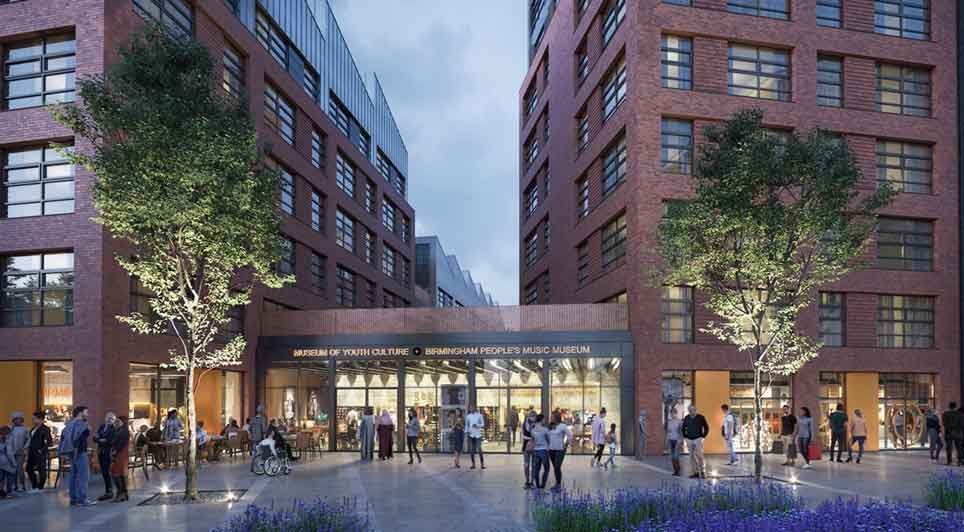
29/01/2025
Caddick Construction has been awarded a £43 million contract to deliver the first phase of Cole Waterhouse's flagship regeneration scheme in Digbeth, Birmingham.
The project, known as Upper Trinity Street, marks a significant step in the area’s transformation.
Spanning 182,986 square feet, the re

29/01/2025
McLaren Construction has been appointed by O&H Properties to deliver the first phase of a £60 million Foster & Partners-designed development at the corner of New Bond Street and Grafton Street in London’s West End.
The seven-storey, 5,400 square metre prime retail and office scheme will feature ret
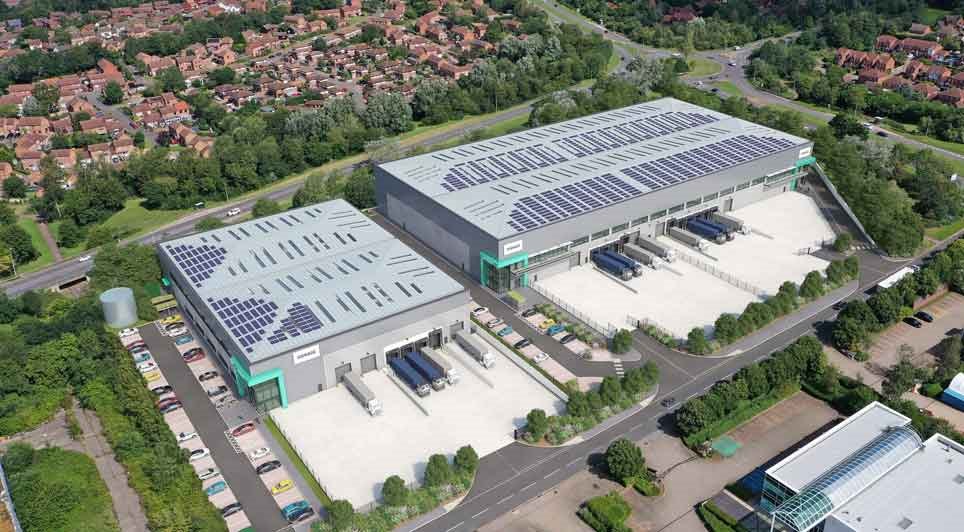
29/01/2025
GMI Construction Group has been awarded a contract to develop three high-specification warehouse units totalling over 175,000 square feet at Precedent Drive, Milton Keynes.
The £20 million project, commissioned by DV5 Last Mile Developments (UK) Ltd, a joint venture between Coltham and Delancey Re
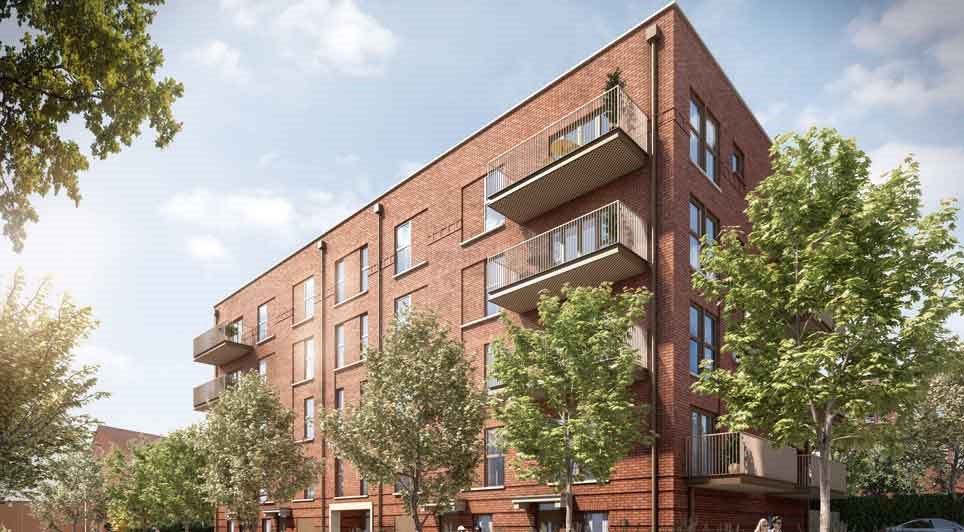
29/01/2025
Plans for 106 sustainable new homes in Southville, a neighbourhood in South Bristol, have been approved as the city seeks to increase housing delivery to address growing demand.
Top 10 award-winning housebuilder The Hill Group will create a £60 million development on Raleigh Road, on land that was
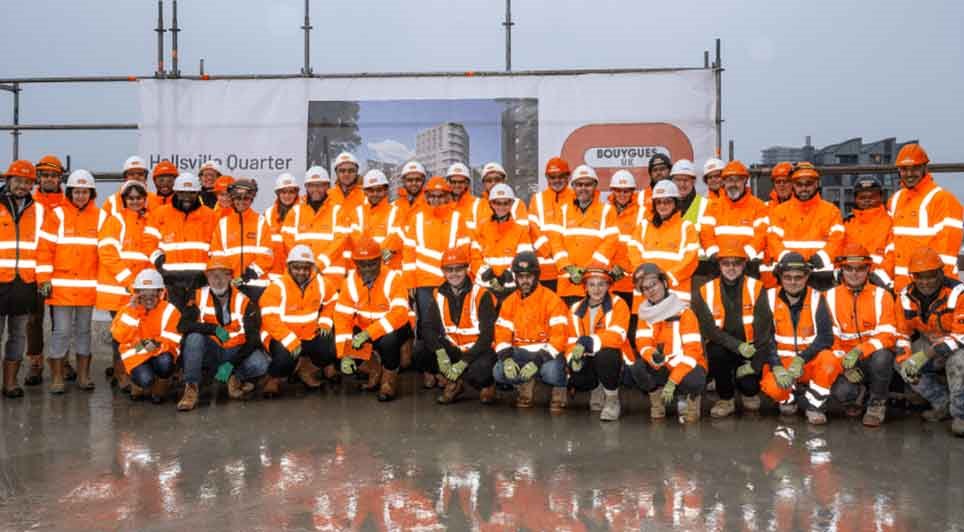
29/01/2025
Bouygues UK has reached a major milestone in the fourth phase of the Hallsville Quarter regeneration project in Canning Town, London.
The project, part of the £3.7 billion Canning Town and Custom House Regeneration Programme, recently held a topping out ceremony, marking the completion of the 11-s
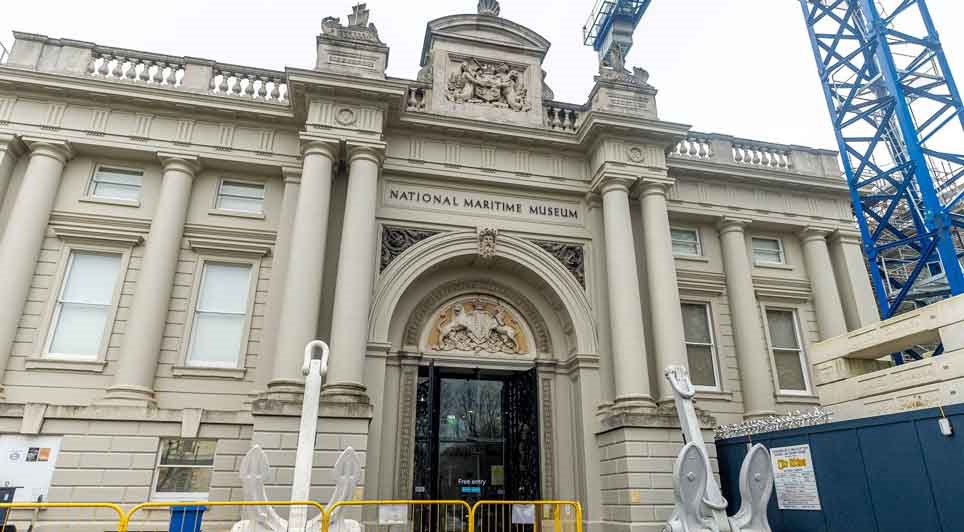
29/01/2025
Willmott Dixon Interiors is carrying out a significant upgrade to the roof of the National Maritime Museum in Greenwich, one of London's most iconic cultural landmarks.
As part of the £12 million project, the company is installing over 23,000 square feet of sun-protected glazing above the museum’s
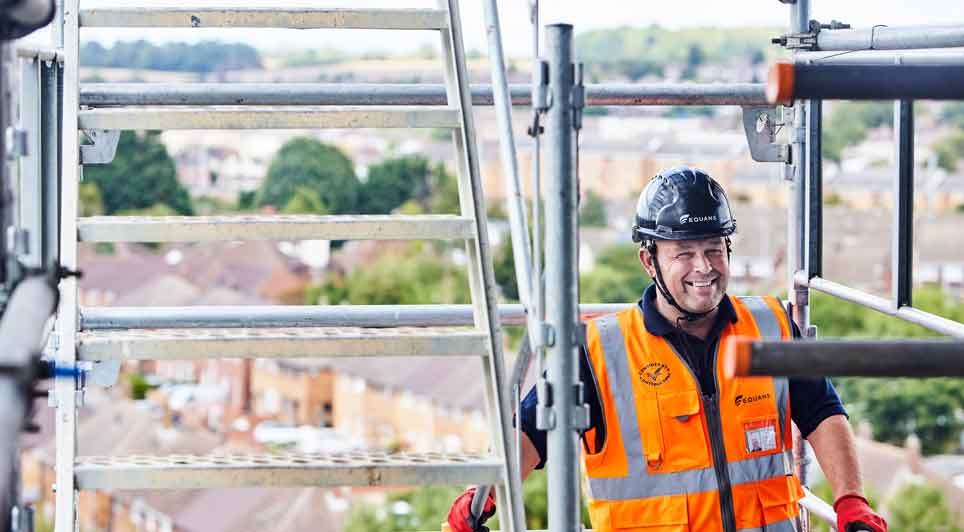
29/01/2025
Equans has been appointed by Babergh and Mid Suffolk District Councils to carry out crucial decarbonisation work across the councils' housing stock, using funding secured through the Social Housing Decarbonisation Fund (SHDF).
The councils used the South East Consortium's Zero Carbon Framework to s
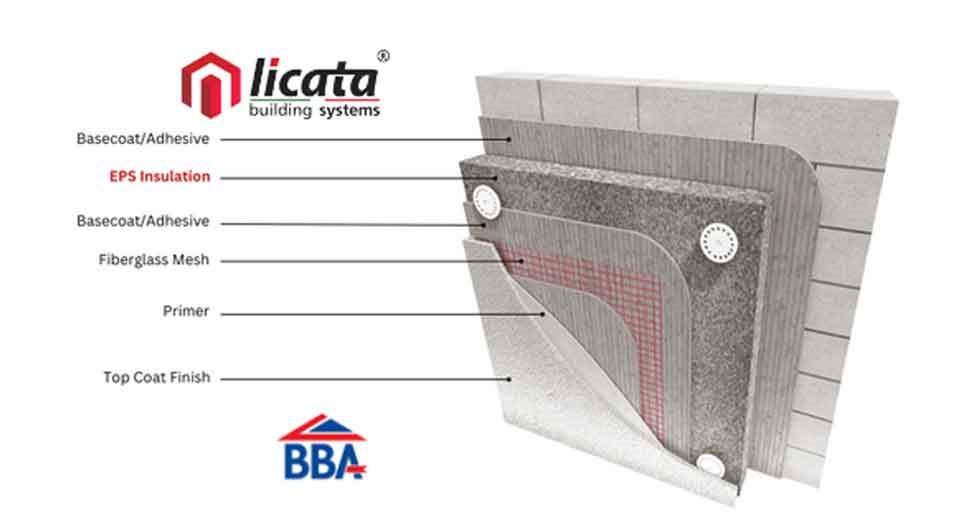
29/01/2025
In the world of construction, the quest for energy efficiency and sustainability is ever-evolving. Among the array of solutions available, EPS (Expanded Polystyrene) insulation stands out as a versatile and effective option for enhancing the thermal performance of buildings, particularly when used f
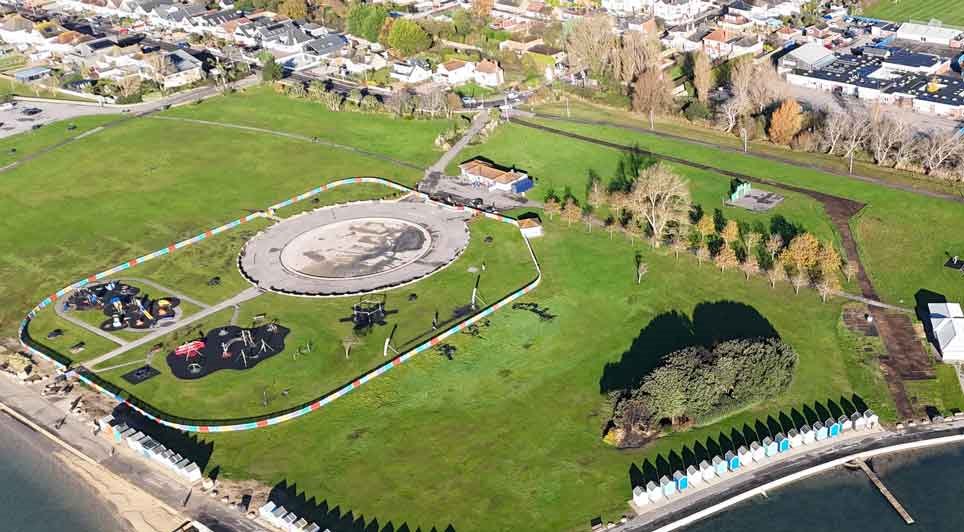
29/01/2025
BCP Council has completed significant coastal protection works at Hamworthy Park, ensuring its resilience against erosion for the next 20 years.
A 200-metre stretch of sea wall along the eastern promenade has been reinforced using low-carbon concrete, while new steps have been constructed to improv

29/01/2025
Geo-environmental consultancy and remediation contractor, The LK Group, has strengthened its team with a trio of recruits.
The multidisciplinary company's latest raft of hires comprises a new director, associate director and remediation manager.
The geo-environmental specialist, headquartered i
 UK
UK Ireland
Ireland Scotland
Scotland London
London



